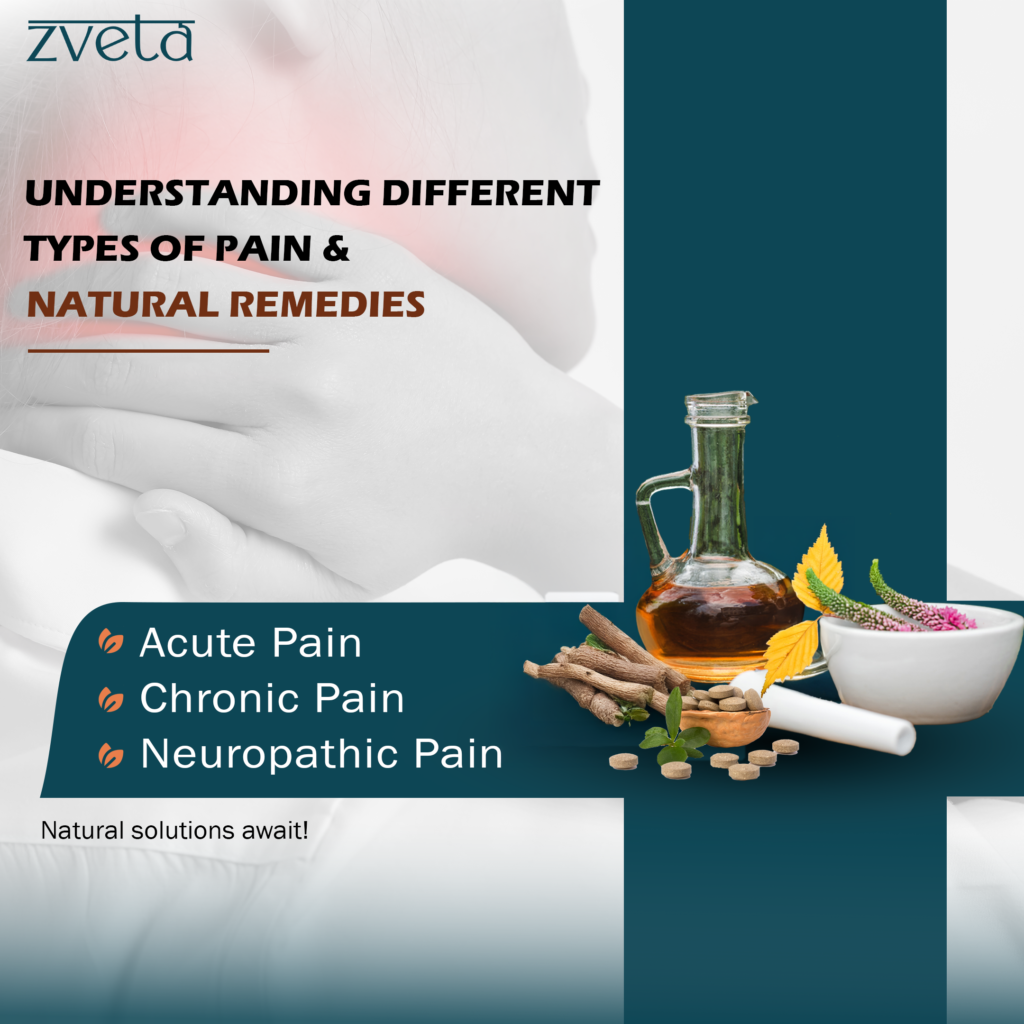Pain is the body’s natural response to injury, illness, or stress, signaling that something isn’t quite right. It serves as an important protective mechanism, alerting us to potential damage and encouraging us to take action—whether by resting a strained muscle or seeking medical help for a more serious condition. However, when pain becomes chronic or persistent, it can significantly impact our quality of life. Understanding the different types of pain and their underlying causes is key to finding the most effective treatments. Painkillers to manage pain can often be addictive and come with a range of side effects, leading many people to seek alternative, natural remedies. Fortunately, there are numerous holistic approaches that can help reduce or even eliminate pain without relying on pharmaceuticals. In this blog, we’ll explore various types of pain and share natural treatments that can promote healing, alleviate discomfort, and restore balance to the body.
Types of Pain
Pain can be classified in a number of different ways. For the sake of this discussion, we’ll focus on the most common types based on their duration, cause, and nature. Let’s break down the different types of pain and their underlying causes:
- Acute Pain – Short-lived pain that occurs in response to injury, illness, or surgery (e.g., sprains, burns). It’s intense but temporary, typically resolving once the cause is treated.
- Chronic Pain – Long-lasting pain that persists for weeks, months, or even years. It often results from conditions like arthritis, fibromyalgia, or nerve damage, and may continue even after the initial injury has healed.
- Neuropathic Pain – Caused by damage to or dysfunction of the nerves, often from conditions like diabetes, sciatica, or shingles. It’s characterized by burning, tingling, or stabbing sensations and may persist without a clear injury.
- Visceral Pain – Originates from the internal organs (e.g., stomach, intestines, heart) and is often described as deep, cramp-like, or dull. It can be caused by conditions like IBS, gastrointestinal disorders, or menstrual cramps.
- Heat and Cold Therapy – Applying a cold compress can reduce inflammation in the immediate aftermath of an injury, while heat therapy (such as a warm bath or heating pad) can relax muscles and improve circulation for ongoing soreness. Heat and cold therapy is often prescribed even by physicians and doctors.
- Epsom Salt Baths – Rich in magnesium, Epsom salt can help soothe aching muscles and reduce tension. Simply add a cup or two to a warm bath and soak for 15–20 minutes.
- Herbal Remedies – Herbs like turmeric and ginger are known for their anti-inflammatory properties. Consuming them in teas or supplements can help reduce pain and inflammation in joints and muscles. Arnica cream, when applied topically, can also reduce swelling and bruising from muscle strains.
- Massage and Stretching – Gentle massage, especially when combined with essential oils like peppermint or eucalyptus, can help relax tense muscles and promote circulation. Stretching regularly can prevent stiffness and reduce pain caused by tight muscles.
- CBD Oil – Cannabidiol (CBD), a compound derived from the cannabis plant, has been shown to have anti-inflammatory and pain-relieving properties. It interacts with the body’s endocannabinoid system to reduce nerve pain and inflammation.
- Magnesium – Magnesium plays a key role in nerve function. A deficiency can lead to muscle cramps and nerve discomfort. Taking a magnesium supplement or soaking in an Epsom salt bath can help relax the nervous system and ease nerve pain.
- Turmeric – The active compound in turmeric, curcumin, has potent anti-inflammatory properties. It can be beneficial as a supplement or part of the diet.
- Omega-3 Fatty Acids – Omega-3s, found in fatty fish like salmon, flaxseeds, and walnuts, help combat inflammation.
- Exercise – Low-impact exercises like swimming, walking, and yoga can help improve circulation and reduce joint stiffness associated with inflammatory conditions.



